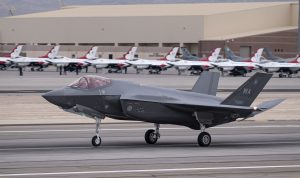
While the U.S. Air Force's fiscal 2022 budget request proposes retiring 201 aircraft, including two squadrons of F-15C/Ds, to help pay for a requested $2.2 billion increase in research and development, U.S. Air Force Chief of Staff Gen. Charles Q. Brown is pressing his staff to focus on analyzing the mix of capabilities that the service will need to deter China and Russia, not platform numbers. “It’s easy for us to talk about numbers, but I’m also talking about capability,…














